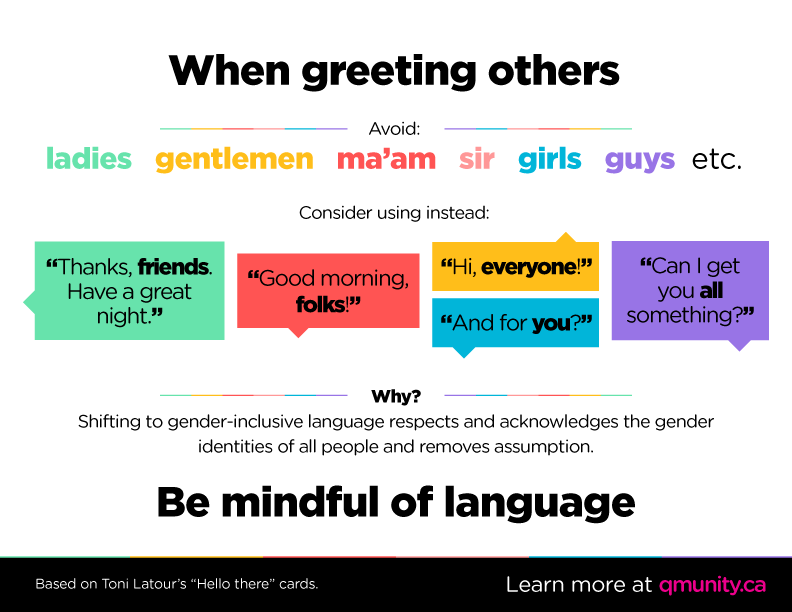Student affairs professionals should never be finished promoting activities to engage students.
Fortunately, summer is the perfect time to reflect and change your approach.
It’s easy to spend time immersed in new retention literature and strategies to promote student engagement that will benefit educational institutions. As educators, we’re always looking for the best ways to increase student engagement and help college students navigate campus life, whether it be getting involved through honors programs, co-curricular opportunities, or collaborating with faculty on research projects.
Experimenting and implementing great student engagement strategies is not like throwing spaghetti against a wall to see what sticks. Institutions need to know exactly whom they’re speaking with, who students are as complex people, and how to make them feel a strong sense of belonging within the campus community.
A change in strategy doesn’t mean you’ve been doing everything wrong. But it means that what may have worked for you three, five, or 10 years ago might not be the best way to continue increasing student engagement in higher education.

Students have a responsibility to prepare themselves for college life and student affairs professionals must meet them halfway to offer support.
“It’s not just asking students to prepare themselves to come to college, but the institution preparing itself to meet the students’ needs. So the burden and that preparation is not just on the students – it’s also on the institution.”
— Manuel Acevedo, Director of Multicultural Student Services at Washington State University, in Rising Tide: Do College Grad Rate Gains Benefit All Students?
Student retention research tells us that we need to create varied approaches to student engagement. The 2014 National Survey for Student Engagement (NSSE) found that many institutions prioritize student engagement as part of their retention strategies. However, in spite of the time and energy allocated toward reaching students, institutions haven’t moved the dial in increasing student retention and engagement overall.
We need administrators, staff, and faculty to be change agents in higher ed and ask tough questions about how we can change to meet the needs of students. As student's attention change and new research emerges, institutional practices should be adjusted.
What is Student Engagement in Higher Education?
Student engagement can be defined as the amount of time and effort that students put into activities that are associated with desired college outcomes, as well as the institutional efforts to encourage students to engage in these activities.
Why is Student Engagement Important in Higher Education?
Leaders in higher education concur that retention and student engagement are related. In general, students who are actively involved in their studies are more likely to succeed, which includes staying enrolled at a school to finish their degree.
A student body that is engaged is also likely to benefit the college or university for reasons other than retention. There are two sides to every coin regarding student engagement: first, focus and participation from the students, and, secondly, how higher education institutions deploy their resources— such as curriculum design and teaching techniques—to support students in accessing and using their education. As a result, institutions should help students adjust to them rather than the other way around.
How to Increase Student Engagement
Here are some ways to create dynamic engagement activities for students and find new ways of improving the student learning experience in a way that promotes an active engagement in learning:
1. Invite new faces to the student engagement conversation
Research in higher education tends to place the responsibility of successful college student engagement on the shoulders of student affairs professionals or faculty. Rarely do we see or hear about engagement strategies from academic affairs and student affairs combined.
If we change our lens to view everyone as an educator in some way, we can all be part of shaping and contributing to a successful student engagement strategy.
Amma Marfo, a higher education professional and student affairs educator, highlights campus partners who aren’t typically invited to conversations about students. As she points out, there is a wide range of professionals who could share valuable insights into the day-to-day lives of our students. Examples include:
- Dining services: Tracking meal plan usage and asking for student feedback via comments cards
- Operations and facilities staff: Through their everyday interactions with students
- Administrative personnel: Through chatting with students before and after meetings
Identify how different campus partners can positively engage with students. These staffs are often on the front lines, observing students’ eating and sleeping patterns, and may be the first to notice if anything has drastically changed in a student’s behavior. They can provide a different perspective in providing feedback.
Delegate someone from your department to take on the role of ‘connector’ — a person who likes to catch up with others and who may regularly see various campus partners. They can report what they’ve learned back to you or your entire department. Then, when it comes time to rally the community in support of students, you’ll have backup to help you understand a more complete student engagement picture.

2. Find students who are already engaged
Engagement can be a hard thing to measure among all students. Characteristics of engaged students to look out for include being actively involved in student organizations, active learning, experiential learning, service learning, or multidisciplinary learning — just to name a few.
Let’s be clear: Understanding engagement is about more than just seeing students participate in an activity. It’s about listening to their stories and understanding how feeling tied to a community has impacted their overall development. John Austin, executive director of student affairs at Ryerson University discusses how we can explain our efforts and understand the impact of engagement through assessment and storytelling:
“Nobody hears the stories that aren’t told.’ I say this to empower our student affairs staff to be more mindful of the power of storytelling. Our jobs are easier when we take time to talk about what we’re doing. It’s easier and more comfortable to make changes when you’re doing the kind of informal review of your programs and services that storytelling requires. It’s easier to attract resources with a compelling narrative.”
Once we identify programs and services that work, students can help us home our engagement goals home and can be role models to students who don’t feel a strong connection to the campus community.
“The best promoters of student engagement are engaged students!” -Monica Pugh, @udem#ACUI16#sachat
— Cassidy Sansone (@cassidysansone) March 23, 2016
What are some other ways we can identify the benefits of student engagement? The answer is different for every institution.
The High Impact Practices for Community College Student Engagement e-book may be a great resource for community colleges, whereas the National Survey for Student Engagement is a better resource for traditional four-year institutions.
Both resources are great starting points in providing a framework of student engagement for various departments, including orientation, FYE, living-learning communities, supplemental instruction, assessment, registration, academic affairs, and student success. Departments nationwide create subgoals based on engagement and reported how they met (or did not meet) their goals in these reports.
3. Create a welcoming environment for students
Consider providing staff with resources to expand their awareness and knowledge of diverse student populations. Staff who don’t regularly interact with marginalized students may unintentionally make them feel more isolated.
Shift from a culture of training, where someone else determines what you need to know, and move to a culture of learning, where you are responsible for your own development.
Student affairs professional and intrapreneur Junior Pena offers reflection questions for professionals:
“More specifically, do I know the student needs on my campus? If not, why not? How am I putting students needs at the forefront of my work? How can I learn to do my work more effectively? What haven’t I done so well and how can I learn from it?”
Offer opportunities in your learning environment — such as discussion forums, interactive training sessions, webinars, conferences, or seminars — for people who constantly interact, see, and observe students’ behaviors. Introduce ideas on how to create a supportive institutional climate and ask folks from each functional area to participate in Safe Zone Trainings, sexual assault response, or Title IX trainings, and explain how to appropriately refer students to counseling.
One simple way to improve institutional communication is to have staff review and edit course materials, documents, or electronic communications sent to students.
Gendered words and phrases, such as “leads and gentleman”, “brothers and sisters,” and “manmade” should be eliminated and replaced with gender-inclusive words like “folks,” “friends”, or “everyone”. =
=
4. Understand the mobile-first generation
Anyone born in the last decade will not have known a world without smartphones, mobile internet access, social media, instant messaging, and on-demand television.
Partner with admissions and enrollment management folks and ask them to find major themes — such as hopes, dreams, and fears — that appear throughout application essays from the incoming class. This can help professionals better understand first-year students.
It’s also helpful to review the demographic attributes of students — like if a large percentage identify as first-gen or LGBTQ — in order to understand their mindset and some of the unique challenges they may face.
Cornell University reported that its class of 2020 is the most diverse class yet. We need to be prepared to understand how to best support these students when they arrive to campus. Similar reports of increased student diversity have been published by Johns Hopkins University and Rensselaer Polytechnic Institute.
The Beloit mindset list helps to remind staff of the generational gap and how each incoming class has different life factors that have affected them. The next mindset list should be released close to August 2016.
Here are some interesting facts about the class of 2019:
- “They have never licked a postage stamp.”
- “Hybrid automobiles have always been mass produced.”
- “The proud parents recorded their first steps on camcorders, mounted on their shoulders like bazookas.”
- “They have grown up treating Wi-Fi as an entitlement.”
- “They have avidly joined Harry Potter, Ron, and Hermione as they built their reading skills through all seven volumes.”
- “Their parents have gone from encouraging them to use the Internet to begging them to get off of it.”
5. Break down the silo mentality
If you’ve worked at an institution previously, you may have noticed that people often communicate and share their thoughts as individuals rather than as teams.

Communication silos occur when teams talk exclusively amongst themselves at the expense of big picture institutional goals. Isolation from other teams can cause misaligned student learning outcomes, misinformed student-oriented decisions, and strayed student affairs values.
Business Dictionary describes the silo mentality in the following way:
“A mindset present where certain departments do not wish to share information with others in the same company. This type of mentality will reduce efficiency in the overall operation, reduce morale, and may contribute to the demise of a company culture.”
While there is no clear-cut solution, the silo mentality can be remedied by sharing goals among functional areas.
The silo mindset does not just appear suddenly, nor does it result from a single interdepartmental communication hiccup. The mindset usually be traced back to top leadership, so it’s crucial for goal facilitation to start with those people.
I suggest coming together as a team at the beginning of the year to identify concerns, priorities, and goals for the upcoming semester. Establish a shared vision involving overarching goals for the institution and division, then create subgoals for each functional area. Create buy-in through healthy discussion, giving each functional area a piece of the pie.
Good communication relies on understanding and trust. When people from different departments don’t develop good social relations, they don’t communicate well, plus they interpersonal problems that interfere with the task at hand, and are unable to reward and motivate one another (Levi, 2011).
Jason Meriwether, vice chancellor for enrollment management and student affairs at Indiana University Southeast, explains the importance of gathering staff members for a common purpose:
“Listening and respect for your team is a recipe for making good decisions. Creating an environment where people feel ownership of the organization year-round is more effective than just calling the troops together when it is time to ‘get feedback’ or in a crisis. It is also important to give credit to members of the team for their successes, and to share good news about our team with our campus community. On our team, everyone matters, every day.”
6. Remove barriers to involvement
Students, families, and new professionals now expect to interact with some piece of software whether it’s an online job application, a club or organization form, or a room-selection process.
Things that deter students from getting involved include unnecessary logins, multiple webpages with repetitive content, or a pile of information that they must sort through to determine what’s actually important.
Organizations, faculty, and staff rely on surveys, requests, and other sorts of paper forms that are rarely stored or created in a central location, forcing students to pinball from office to office trying to find them.
Processing forms and organizing responses by hand is cumbersome. Paperwork is frequently misplaced, which causes delays in projects and creates a higher potential for miscommunication.
Have you heard of the KISS rule of simplicity? Also known as Keep It Short and Simple, the KISS solution is about striving for simplicity. A process should be simple, which will result in increased readability, usability, and changeability.

Use electronic forms and surveys to simplify processes and set up appropriate workflows between staff and student leaders. More and more institutions are adopting engagement software and streamlining online processes so students can better find the information they’re looking for.
Most processes evolve over time to meet the needs of students, and we often forget the reason why they exist in the first place. It’s best to start from scratch and use the strategies you’ve learned here.
7. One Student Engagement Strategy Does Not Fit All
The fact that there is no one-size-fits-all way to do things is actually a great attribute. Folks who are looking to enhance their student engagement strategies or build one from the ground up can look into best practices, pull knowledge from campus constituents, and create something completely new.
Student engagement strategy blueprints don’t exist for any college or university to replicate another’s. No matter how well one institution has implemented a student engagement strategy, there’s no telling how well it will work with a different campus feel, student size, staff makeup, or student culture.
Many programs, policies, and practices we hear about at conferences or through professional development opportunities are potentially transferable to any other institutional setting with a bit of customization. It’s important to incorporate pieces of these into your own unique strategy.
What are some of your most tried and true engagement practices? How are you planning to enhance your engagement strategy for the upcoming year?
Tweet us @themoderncampus and share your ideas!
References
Kahn, B. (2013). https://www.businessdictionary.com/definition/silo-mentality.html
Educating the ‘new normal’ in American higher education: a three-pronged approach. www.farmingdale.edu/facultyresources/pdf/educating_the_new_normal.pdf
Levine, A., & Cureton, J.S. (1998). When hope and fear collide: A portrait of today’s college student, San Francisco: Jossey-Bass Inc. Publishers.
Trust, E. (2015). Rising tide: do college grad rate gains benefit all students? edtrust.org/resource/rising-tide/
Wilson, R. (2015, September 4). An epidemic of anguish: Overwhelmed by demand for mental-health care, college face conflicts in choosing how to respond. Chronicle of Higher Education, pp. 38-40.
National Survey for Student Engagement: https://nsse.indiana.edu/NSSE_2014_Results/pdf/NSSE_2014_Annual_Results.pdf
Lumina Foundation: https://www.luminafoundation.org/resources/graduation-rates-rise-for-some
Zepke, N., and Leach, L. (2010). Improving student engagement: Ten proposals for action. Active Learning in Higher Education, 11 (3), 167-177.





